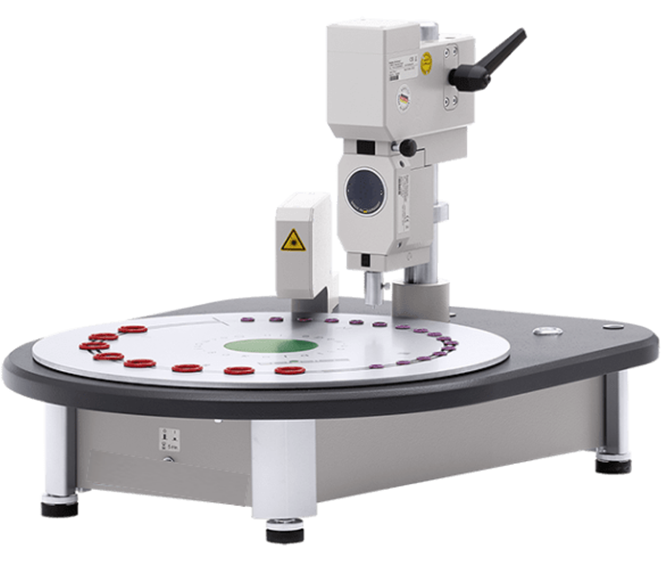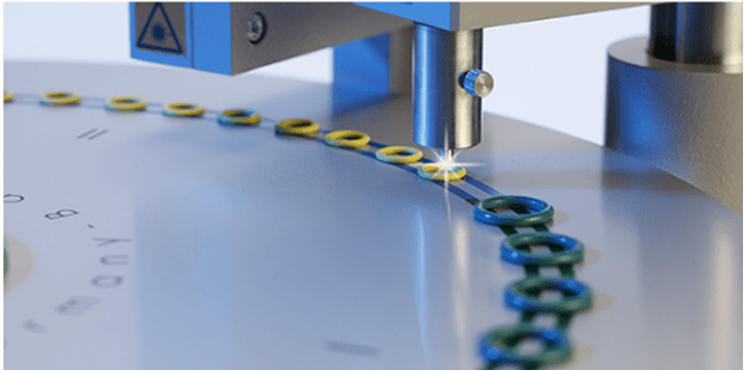13
2023
-
12
Test method on O-rings and seals
Our O-rings and seals perform many tests. Below, you will see the most common tests we perform.
- Hardness
- Compression Set
- Tensile Strength
- Chemical and Heat ageing
- Ozone Resistance
- Material Composition
- Dimensional Measurements
- Surface Defects
- Material properties at temperatures from -70 °C to 300 °C
- Tests run to ASTM, DIN and ISO standard

Identity Testing
Identity tests are understood as tests that allow finding conformities of a test lot with the reference values from the sampling or from previous deliveries. They include simple testing methods that can be supplemented with more complex and more significant ones if required.
Hardness Testing
Hardness tests are understood as the metrological recordings of hardness on rubber test sheets or finished parts. This hardness is determined by means of a standardized identifier. Hardness tests are probably the most applied and most common test method in the elastomer industry.
Compression sets
Elastomers are not ideal elastic materials. For example, if a seal is deformed for a longer period, the seal will not return to its original shape after removing the deformation. If this deformation takes place at high temperatures, this effect is especially evident, even if the maximum temperature of the seal has not been exceeded.
Compression Set at Low Temperatures
At low temperatures, rubber materials constantly lose their elastic recovery force, which means that they can only bridge the gap size to a limited extent and can significantly slow down their reset speed.
Tension Test
A Tensiontest (TS test) such as a compression test (CS test) is a possibility to obtain information about the relaxation behavior and the crosslinking state of a sample due to its resilience behavior after a controlled temperature load. In special cases of application and with special sealing geometries, it is a useful addition to the compression test.
Tensile test
During a tensile test, standardized samples (in most cases special tensile test samples) as well as finished parts (e.g. O-rings) are clamped in a tensile test machine and stretched at a constant speed until they tear. During this process, the progress of the required strength and elongation is recorded and a tensile diagram is compiled.
Immersion Tests
Immersion tests are performed to ensure the functional behavior of rubber materials or elastomer seals relative to different materials. In the course of this, the following information is provided:
• Impact due to swelling (increase or decrease in volume)
• Change in hardness (embrittlement or softening)
• Change in the network structure of the material as a result of a chemical attack.
Heat Aging
During heat aging, a standardized sample is exposed to hot ambient air over a predefined constant temperature. This process takes place with several samples in a type of circulation air oven with fresh air supply or in cell ovens separated into samples. The assessment of materials that age in hot air is made by comparing important physical values ??(e.g., hardness, tensile strength, elongation at break and the like) before and after aging.
Ozone Resistance
Under normal environmental ozone concentrations, elastomer materials may form deep cracks which usually lead to a failure of a component. But the following conditions are required:
• A highly unsaturated polymer, e.g. NBR, NR or SBR
• A deformation > 3-5%
• An admission of ozoniferous air (an unbraked air exchange at the seal)
In practice, this occurs particularly at pre-installed NBR-seals which are exposed to their environment. In contrast, this does normally not occur at installed seals.

ISO 3601-5 Conformity Tests
With the new edition of the standard ISO 3601-5 in April 2015, it has been achieved to define a standard for material formulations and requirements of finished parts on an international level.
Conformity Tests according to Automotive Specifications
Oil Compatibility Tests
We regularly carry out resistance tests in which the resistance to various oils is tested. Hydraulic fluids have been tested according to ISO 6072. Of course, we also test according to your standards or your elastomer material. In the context of car specifications, we also regularly perform tests with various engine- and transmission oils.
Refrigerant Compatibility Tests
Especially for tests in refrigerants, such as HFO-1234yf or R1234yf or R134a, we have a special in-house filling system to create a vacuum in the autoclaves before filling. We also carry out regular resistance tests on carbon dioxide, CO2. On request, we also carry out tests in other refrigerants.
Water / Steam / Coolant Resistance Tests
We perform tests in water or steam, in coolant mixtures and other aqueous mixtures until over 200°C.
Low-temperature behavior/Low-Temperature Flexibility Tests
The low-temperature behavior of elastomers could be measured by a lot of different test methods that are not comparable. Therefore it is important, to know these methods. However, it could be even more confusing, if just a low-temperature limit is given without any relation to a test method. We recommend applying either the TR10-method or compression set at low temperatures or DSC-method.
To learn more about the size, material, product catalog and price of o-ring oil seals, please contact us as follows
Contact: Emily Ke
Email: Emilyke@lanhechina.com
Tel: (86)769-85637586
Phone: (86) 138 2927 2978
More News


